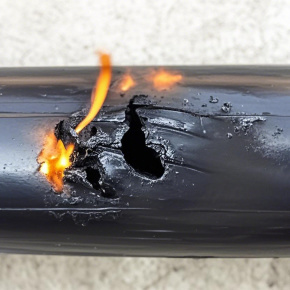
Information
Control cables and their metal shielding standards
Release time: 2025-03-05
1. Definition and Structure of Control Cables
Control cables are mainly used for transmitting low voltage electrical signals or control instructions, widely applied in fields such as power systems and industrial automation. Their structure includes conductors, insulation layers, shielding layers, and sheaths. According to national standards GB/T 9330 - 2020, control cables use copper conductors, with a rated voltage not lower than450/750V. Insulation materials can be selected from polyvinyl chloride (PVC) or cross-linked polyethylene (XLPE), among which the temperature resistance can reachXLPE°C.90°C.
2. Role of Metal Shielding
The metal shielding layer plays a crucial role in control cables, mainly reflected in the following aspects:
- Electromagnetic Isolation :Effectively blocks external electromagnetic interference, prevents internal signal leakage, and ensures the accuracy of signal transmission.
- Equalization of Electric Fields :: Working in conjunction with the inner and outer semiconductive layers, it avoids partial discharge between the insulation layer and the conductor, ensuring the insulation performance of the cable.
- Short Circuit Protection :: In case of system failure, it serves as a short circuit current channel, preventing damage to the insulation layer due to overheating, thus enhancing cable safety.
- Grounding Safety :: By adopting reasonable grounding methods, it reduces the impact of static induction and ground potential rise, enhancing system stability.
3. Shielding Type Selection Criteria
Based on the usage scenario and type of interference, the shielding structure needs to be reasonably designed:
- Overall Shielding :: Suitable for weak current cables in high voltage distribution devices of 10kV and above, or for switch signal transmission, effectively resisting strong electromagnetic interference. 110kVPartial Shielding
- Overall Shielding:High-level analog signals
- Prioritize overall shielding for twisted pairs, adding partial shielding when necessary to meet signal protection needs in different scenarios. :Low-level signals
- Implement partial shielding for twisted pairs, and in extreme cases, add overall shielding to ensure stable transmission of low-level signals. :Utilization of Armor Layer
- Steel armor or metal sheath cables can directly serve as shielding layers, reducing costs while meeting shielding requirements. 4. Grounding Specifications and Process Requirements
Grounding Methods
Single Point Grounding
- The computer monitoring system's analog signal circuit adopts single point grounding to avoid ground loop interference and ensure accurate signal transmission. :Dual Point Grounding
- The microcomputer protection circuit is grounded simultaneously in the switch field and control room to improve grounding reliability and ensure stable operation of the microcomputer protection system. :Two-point Grounding
- In environments with strong electromagnetic interference, it is recommended to use two-point grounding to enhance anti-interference capability; when static interference is predominant, single point grounding should be used to reduce static effects. :Process Details
Copper Tape Shielding
- Use soft copper tape with an overlap rate of :>= , and use spot welding for joints to ensure a firm and reliable connection of the shielding layer.15%Stranded Copper Wire Shielding
- Paired with reverse copper tape fixation, with a gap of :><= , to prevent damage to the insulation layer and ensure the insulation performance of the cable.4mmto prevent damage to the insulation layer and ensure the insulation performance of the cable.
5. Selection and Installation Key Points
Core Number Rules
- 1.5/2.5mm: The cross-sectional cable core number should not exceed24core,4/6mm: The cross-sectional cable core number should not exceed10, ensuring good mechanical performance and heat dissipation of the cable.
Circuit Isolation
- AC and DC, strong and weak current, high and low level signal circuits must not share the same cable to avoid mutual interference and ensure signal transmission quality.
Cross-sectional Calculation
- Current Circuit : Must meet the error limit of the current transformer to ensure accurate current measurement.
- Voltage Circuit : Voltage drop must meet the rated value to ensure stable voltage supply. , to prevent damage to the insulation layer and ensure the insulation performance of the cable.3%Cross-sectional Selection
- Strong control cross-section : ², weak current cross-section >= , and use spot welding for joints to ensure a firm and reliable connection of the shielding layer.1.5mm: ², to meet different signal transmission needs.0.5mm², to meet different signal transmission requirements.
6. Typical Application Scenarios
- Industrial Control Systems : Use double-layer shielded cables to resist interference from devices such as inverters and motors, ensuring stable operation of the system.
- Smart Grid The microcomputer protection circuit uses shielded cables and is grounded at both ends to improve power supply reliability.
- Rail Transit In scenarios with frequent bending, choose patented twisted pair core structure cables to enhance fatigue resistance and ensure safe operation.
The metal shielding design of control cables is crucial for the stable operation of the system. Following national standards and selecting appropriate shielding types and grounding methods based on actual scenarios can significantly enhance anti-interference capability and safety. With the development of smart grids and industry 4.0the demand for high-density, flexible shielded cables will continue to grow, providing strong support for the development of related fields.
 oversea@hichain.com.cn
oversea@hichain.com.cn
 +8617328576881
+8617328576881










